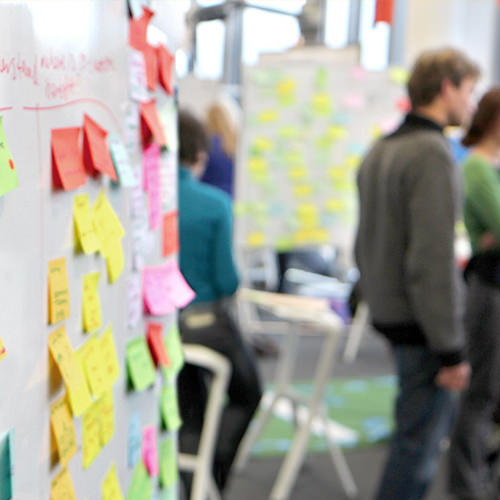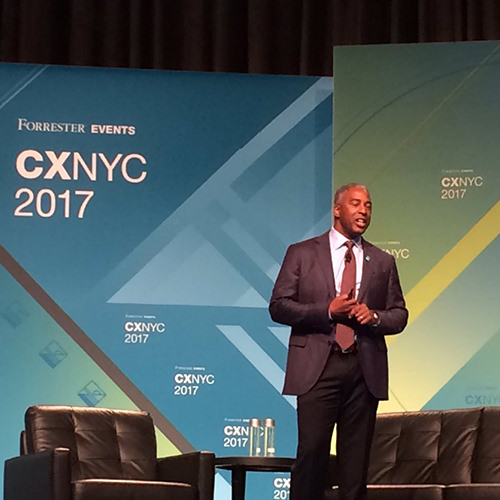Your company has decided to completely redesign the website, and everyone is excited. Those quirky images and outdated pages will finally be gone, replaced by a stylish, modern digital property that employees will be proud of and customers will love. All the old site’s issues will be dealt with at once, and the company can move on to other big initiatives… right?
A redesign is not an end point, it’s the beginning of a journey that’s never done.
Of all the misconceptions in this vision, there is one assumption that will do the most long-term damage: the belief that, once the redesign is finished, it’s truly over and done with. A redesign is not an end point, it’s the beginning of a journey that’s never done. Website redesigns, especially those with a responsive focus, involve much more than a fresh coat of paint. A website that gets redesigned and then shuffled off the priority list is destined for a do-over two years down the road. Ensuring your website stays in line with business and customer needs requires ongoing learning and refinement. By keeping a team focused on iterative cycles of research and design, companies can minimize the need for large-scale redesign projects, making their next major redesign effort their last.
Why is that a good idea? For one thing, comprehensive redesign projects are expensive. The sheer amount of work involved forces companies to either dedicate a large portion of their internal team to the task or hire outside help, both of which take time and money away from other company initiatives. Beyond the actual work of creating the new design, these projects often involve researching customer needs, auditing and creating fresh content, and learning and implementing new technology systems, all at the same time. On top of that are the less measurable, and often unaccounted-for, costs of friction and frustration that your users will feel while learning how to use the new website. All of these factors add up and make full-scale redesigns an expensive undertaking.
In addition, large redesigns often have expectations that exceed the outcomes. Thanks to the ever-present planning fallacy, the project plan will likely underestimate the true scope of work entailed in a complex digital project with many dependencies. Because a full redesign starts from the ground up, teams must gather and manage many inputs to the project in a relatively short window of time. It’s critical to prioritize the most important site features, but that means some of the planned features will undoubtedly be left incomplete or get pushed to a future phase that may or may not happen.
Most importantly, don’t lose sight of the fact that process matters. If you try to reuse the same process that produced the current inadequate website, you’re unlikely to get better results (Karen McGrane discusses this fact at length in her book Going Responsive). Processes must evolve in line with the goals of a new site, which means digital teams will need to learn new ways to work while still getting the work done.
Processes must evolve in line with the goals of a new site.
In certain situations sites that have grown truly dated sometimes need a more intense, focused design effort to move away from the pattern of periodic redesigns. The best strategy in a case like this is to make this work gradual and incremental, minimizing risk and reducing costs over time. This approach helps users orient and recalibrate their mental model of your site with minimal frustration. Instead of simply flipping the switch all at once, use tactics like canary releases and feature flags to help validate changes with select user groups before rolling them out to the full user base.
To avoid being left with another stale website be sure to keep a dedicated team focused on ongoing growth and improvement—not just maintenance—to ensure that your site continues to evolve with changing business goals and customer needs. Over time, that team can build upon the technology foundations and design infrastructure already in place, rather than letting the site decay until it needs complete replacement again in the future. Paying down design debt as it accumulates is a great way to fight the entropy that hurts a site’s effectiveness over time.
Anyone who has been part of a large redesign project knows that one of the biggest challenges is simply coordinating the work across a large team. A close-knit, cross-disciplinary team working iteratively through prioritized objectives is paramount to both the short-term and ongoing success of the site. Teams need to effectively manage priorities and start with simple solutions that minimize the costs of complexity down the road.
Finally, be smart about choosing your objectives from the beginning. The goals of any site redesign or refinement effort need to be informed by solid research and analytics about how people are using the site currently. A solid understanding of the data will allow you to focus on the biggest pain areas first, matching your team’s most focused effort to the areas of greatest return. This approach will also give you the confidence to retire unused features, paving the way for the team to focus on the most important aspects of the site. Walking into a redesign blindly can leave you spinning your wheels on low-impact “long tail” aspects of the site instead of those that are most critical. Smashing Magazine sums this up nicely in a classic article about redesigns: “Understanding user needs and analytics gives you the data needed to make hard decisions about focus and priority. Without these guiding lights, you could just be burning money.”
If you’ve recently completed a redesign, now is the time to make sure the site doesn’t start collecting dust, by keeping a team in place that can consistently refine and improve it over time. If you’re currently considering a full-scale redesign, consider ways to break it down and focus on incremental steps. With these ideas in play, this redesign can actually be your last.
Cantina has been part of redesign projects large and small and knows a thing or two about the principles discussed here. Take a peak at a sample project we completed for Avid or use the form below to start a conversation.




